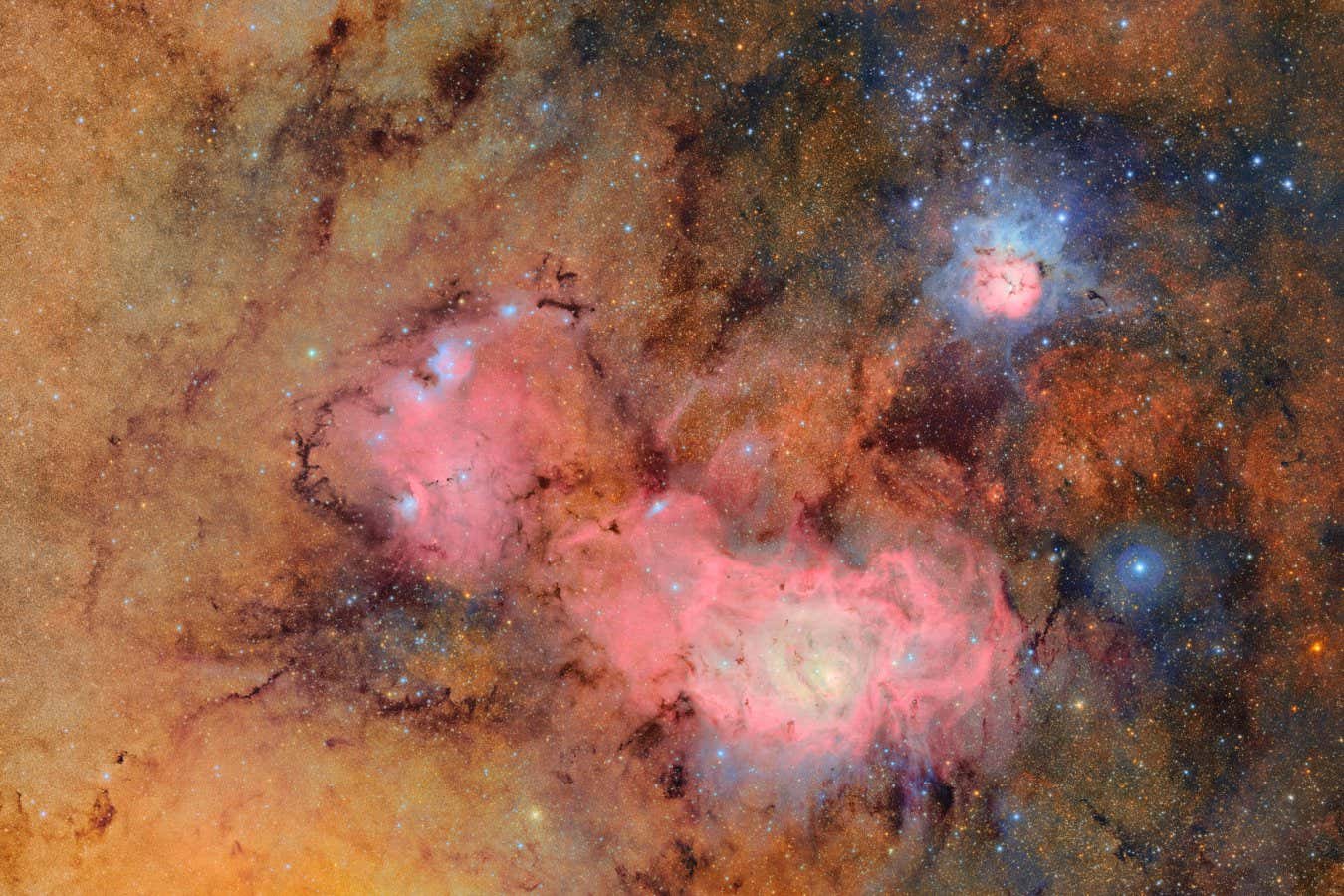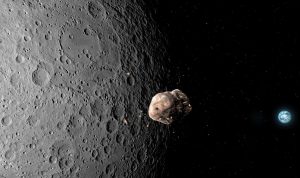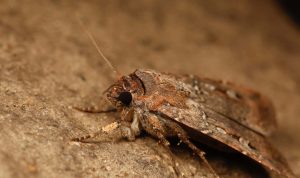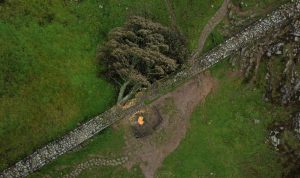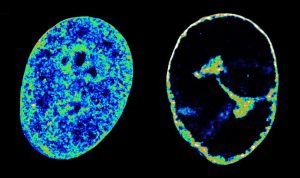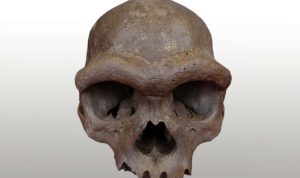A powerful new telescope in Chile is set to transform astronomy, and its first pictures of stellar nurseries and galaxies have just been unveiled
23 June 2025Last updated 23 June 2025
The Trifid (upper-right) and Lagoon (centre) Nebulae as viewed with the Vera C. Rubin ObservatoryNSF-DOE Vera C. Rubin Observatory
The Trifid (upper-right) and Lagoon (centre) Nebulae as viewed with the Vera C. Rubin Observatory
NSF-DOE Vera C. Rubin Observatory
A pink-and-blue feast of stellar nurseries and a dense cluster of our neighbouring galaxies appear in the first glimpses of space from theVera C. Rubin Observatory, which is set to transform our understanding of the universe with unprecedentedly detailed scans of the night sky.
These images, which were compiled from around 10 hours of observation from the Cerro Pachón mountain in Chile, are tests that illustrate the sorts of shots Rubin is capable of capturing. The telescope’s decade-long mission to observe the night sky each night, known as the Legacy Survey of Space and Time, will start later this year.
Read moreThe Vera C. Rubin Observatory is about to totally transform astronomy
The Vera C. Rubin Observatory is about to totally transform astronomy
The first image (above) contains the Trifid Nebula, the pink-and-blue ball in the upper-right quarter, which is a star-forming region in our galaxy surrounded by thousands of young stars. In the centre of the shot is the Lagoon Nebula, a vast cloud of interstellar gas and dust. To create this image, astronomers combined 678 different pictures taken over 7 hours by Rubin.
A small section of the Vera C. Rubin Observatory’s total view of the Virgo clusterNSF-DOE Vera C. Rubin Observatory
A small section of the Vera C. Rubin Observatory’s total view of the Virgo cluster
NSF-DOE Vera C. Rubin Observatory
Voyage across the galaxy and beyond with our space newsletter every month.
The second image is a close-up of the Virgo cluster, a network of thousands of galaxies that has been known to astronomers for centuries. While its brightest members can be seen with simple telescopes, Rubin’s view shows the entire cluster and the galaxies around it in extreme detail. The full zoomed-out image, which can be seen in the video above, reveals around 10 million galaxies.
These are just 0.5 per cent of the 20 billion galaxies that Rubin will observe over its lifetime, helping shed light on mysteries such as dark matter and the possible existence of another planet in our solar system, known asPlanet Nine.
The telescope’s science team has also built a tool called Skyviewer, which isavailable to the public. It lets viewers explore these extremely high-resolution images by panning around and zooming in on the stars and galaxies.
The world capital of astronomy: ChileExperience the astronomical highlights of Chile. Visit some of the world’s most technologically advanced observatories and stargaze beneath some of the clearest skies on earth.Find out more
Experience the astronomical highlights of Chile. Visit some of the world’s most technologically advanced observatories and stargaze beneath some of the clearest skies on earth.
Receive a weekly dose of discovery in your inbox!
We'll also keep you up to date withNew Scientistevents and special offers.

